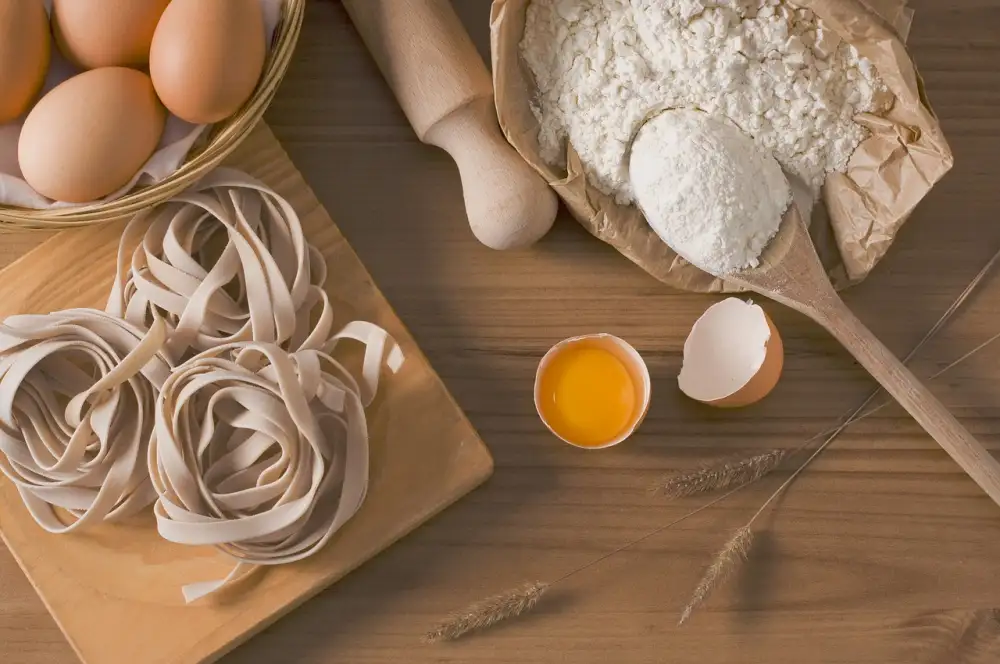Flour Power: Discover How Long Flour Lasts for Fresh and Flavorful Recipes

Flour is a staple ingredient in many kitchens, but its shelf life can vary depending on various factors. Understanding how long flour lasts is essential for ensuring the freshness and quality of your baked goods. Proper storage and handling are key to maintaining the flavor and texture of flour over time. In this article, we will explore the different types of flour, factors that affect their freshness, signs of spoilage, storage tips, and creative ways to use old flour to minimize waste and maximize your culinary creations.
Factors Affecting Flour Freshness
1. Moisture: Flour absorbs moisture easily, leading to mold growth and spoilage. Store flour in airtight containers to prevent exposure to humidity.
2. Temperature: Heat can cause flour to go rancid quickly. Keep flour in a cool, dry place away from direct sunlight.
3. Light: Exposure to light can accelerate the oxidation process in flour, causing it to lose freshness and flavor. Store flour in opaque containers or dark pantries.
4. Contamination: Cross-contamination with other food items or pests can also impact the freshness of flour. Ensure proper sealing and cleanliness of storage containers.
5. Quality of Ingredients: The quality of the original wheat or grains used to make the flour can affect its shelf life. Opt for high-quality flours for longer freshness.
Types of Flour and Their Shelf Life
When it comes to different types of flour, their shelf life can vary due to factors like the presence of germ and bran. Whole wheat flour has a shorter shelf life of about 1-3 months due to its higher oil content. All-purpose flour typically lasts around 6-8 months if stored properly in a cool, dry place. Bread flour can last up to 8 months or more due to its higher protein content. Gluten-free flours like almond or coconut flour have a shorter shelf life of about 3-6 months due to their higher fat content. It's important to check the expiration date on the packaging and follow storage guidelines for each type of flour to ensure freshness and quality in your recipes.
Signs of Spoiled Flour
It's important to be able to recognize when flour has gone bad to avoid using it in recipes. Spoiled flour may develop a rancid smell, indicating that the oils in the flour have oxidized. The color of the flour may also darken or appear grayish, signaling that it has started to spoil. Insects or mold growth in the flour are clear signs of contamination and spoilage. If you notice any of these signs, it's best to discard the flour to prevent any negative impact on your recipes.
Proper Storage Tips for Extending Flour's Shelf Life
Proper storage is key to extending the shelf life of flour. Store flour in a cool, dry place away from sunlight and heat sources to prevent it from going rancid or developing off flavors. Airtight containers or resealable bags are ideal for keeping moisture out and maintaining freshness. It's best to label containers with the purchase date to track how long the flour has been stored. Additionally, whole grain flours have a shorter shelf life than refined flours due to their higher oil content, so they should be used more quickly or stored in the refrigerator or freezer for longer preservation.
Creative Ways to Use Old Flour
When your flour starts to age and lose its freshness, there's no need to toss it out just yet. Instead, consider using old flour in creative ways to minimize waste. One option is to repurpose it for non-food uses like as a natural alternative for crafting or DIY projects. Old flour can also be used as a thickening agent for soups, stews, and gravies due to its absorbent properties. Additionally, you can mix old flour with water to create a paste for repairing small cracks in walls or as a homemade playdough for kids. By thinking outside the box, you can find innovative ways to make the most of your aging flour before it goes bad.
In conclusion, understanding the shelf life of flour is essential for maintaining the quality and flavor of your baked goods. Factors like type of flour, storage conditions, and moisture levels can all impact how long flour stays fresh. All-purpose and whole wheat flours typically last 6-12 months, while specialty flours may have shorter shelf lives. Spoiled flour can be identified by a rancid smell or taste, discoloration, or the presence of pests. To extend flour's freshness, store it in a cool, dry place in an airtight container. If you have old flour, consider using it for non-food purposes like as a natural cleaner or for crafting projects. By following proper storage techniques and being mindful of signs of spoilage, you can make the most of your flour and create delicious recipes with confidence.
Published: 30. 04. 2024
Category: Recipes



